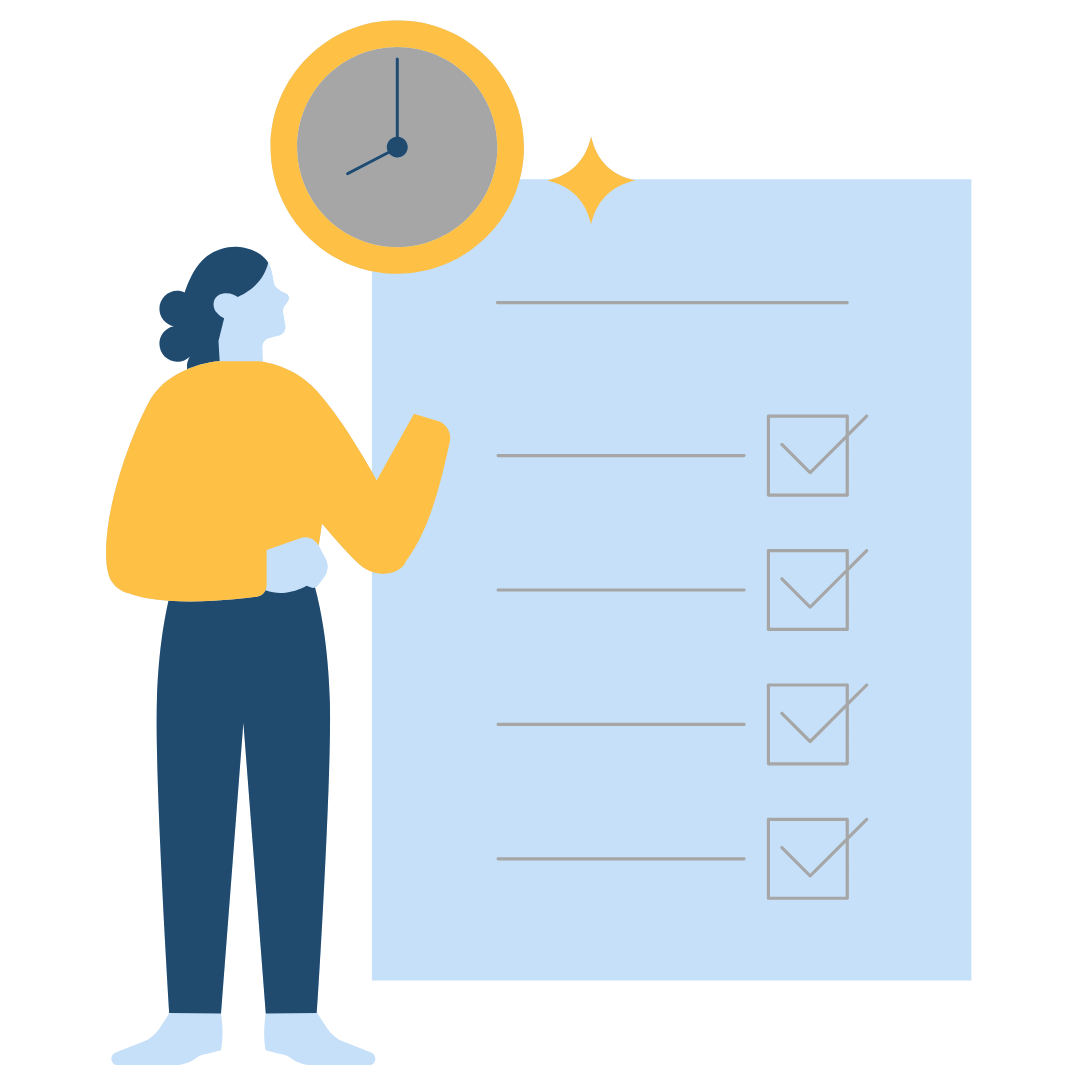Last updated on September 5th, 2023 at 03:21 pm
 Welcome to the first part of our two-blog series on “Designing The Ideal Schedule for Your Dental Practice.” In this installment, we’re diving into the critical aspects of creating a schedule that optimizes productivity and efficiency for your practice.
Welcome to the first part of our two-blog series on “Designing The Ideal Schedule for Your Dental Practice.” In this installment, we’re diving into the critical aspects of creating a schedule that optimizes productivity and efficiency for your practice.
Productive and Efficient: A Dentist’s Vision
When I ask dentists about their ideal schedule, two words consistently pop up: “productive” and “efficient.” These terms capture the essence of what dentists aim for—a schedule that maximizes output while keeping operations smooth.
Nobody wants to slog through exhausting 10-hour shifts, juggling patients and chairs, only to realize they’ve fallen short of their daily production goals. The situation isn’t just frustrating; it’s demoralizing and stressful.
In dentistry, time is a precious commodity, with appointments often slotted in 10-to-15-minute intervals. The schedule isn’t just a plan; it’s the heartbeat of your practice, impacting every facet of its functioning. From patient care to financial success, the schedule holds remarkable sway over it all.
The Challenge of Crafting an Effective Schedule.
Crafting a schedule that operates seamlessly, respects your personal time, and consistently drives productivity is no small feat. Achieving this delicate balance requires careful consideration and planning.
Over the course of this two-part series, we’ll delve into the intricacies of building the ideal schedule for your dental practice.
Before I start, I should mention that I’ve wanted to post about this topic for quite a while. My biggest concerns were the size of the subject and the visual aspects to explain.
We do a 2-day seminar on the subject here at MGE called The Scheduling for Production Seminar. We also have about 7 hours of training on our online platform DDS Success, where we cover the art of scheduling productively (which is for the whole team!) as well as extensive training for the Scheduling Coordinator.
It’s a lot. So, the worry was, how do I sum this up in a way that people can actually use? Well, I think I’ve figured this out. You can let me know in the end, but I decided to go big or go home. I didn’t want to just cover a little tip here or there because without the other parts of the system, it wouldn’t make a ton of sense.
We’re going to cover how to structure everything, but then we’re going to get into some specifics.
Specifically:
Part 1:
- What should your scheduling plan or system be able to do?
- How to set weekly and monthly goals.
- How to class different types of procedures with relation to the schedule and then determine how long those procedures take.
Part 2:
- How your dental assistant fits into scheduling.
- How to productively double book.
- How to structure the schedule to fit emergencies in without wrecking the schedule for the day.
- And finally, how to put all these tools together so that you have the basics of a system.
So, with that, we’ve got a lot to cover. I say we jump right in.
Core Requirements of an Effective Scheduling System
In this section, we’ll explore the fundamental requirements that your scheduling system must fulfill to ensure smooth operations and optimal productivity.
Requirement #1: Thoughtful Time Allocation 
We’re kicking things off with the cornerstone of any effective scheduling system: well-planned time allocation.
It’s imperative that your schedule carves out specific time slots for different types of procedures. This meticulous allocation ensures that procedures seamlessly fit into the schedule.
Now, I’ll be digging deeper into classifying procedures later in this post, so stay tuned. But remember, every procedure category demands its own designated time on the schedule. However, this is just the beginning.
Requirement #2: Flexibility to Accommodate the Unforeseen
Dentistry is no stranger to surprises. A patient could stroll in late, a tooth could suddenly play hard to get during an extraction, or a patient might be feeling a bit too immune to anesthesia. This is where the true mettle of your scheduling system shines—it must be flexible, capable of handling unexpected curveballs without letting the entire day spiral out of control.
This adaptability is key. Without it, a single hiccup could potentially disrupt the entire schedule. Your system needs to be unyielding in the face of the unexpected, ensuring that the show goes on smoothly.
Requirement #3: A Platform for Expansion
Let’s talk about expansion. Your system shouldn’t just be a one-trick pony; it should serve as a launchpad for growth.
Let’s say you’re doing $60,000 a month and things run smoothly on a 30-hour workweek. Good—but what happens if you up your production? Will your schedule start to buckle when you’re doing $100,000+ per month?
If scaling up and reaching new heights is on your horizon, then your system must be up to the challenge. It should seamlessly accommodate increased patient volumes, ramp up efficiency levels, and possibly even provide space for additional providers in the mix.
Requirement #4: Dedicated Time for Treatment Acceptance
Selling is an art, and in dentistry, it’s an indispensable one. To hit that daily production target, you need adequate time to sell treatment plans to your patients.
This slot isn’t just about time; it’s about creating an environment where you can communicate effectively with your patients about their treatment options. Time is your communication bridge.
Most dentists focus so much on production, production, production that a little extra space for treatment presentation/consults feels like “wasted time.” But when you start doing multiple build ups and crowns in a single appointment instead of just the one crown insurance covers, you’ll see how much more efficient it is to dedicate a little more to case acceptance.
It’s not only about the treatment itself but also about minimizing the pesky issue of cancellations and no-shows.
When a patient has some skin in the game—when they’ve committed to a treatment plan and have made financial arrangements already—chances are much higher that they’ll honor their appointment. This strategic financial arrangement, combined with earmarked selling time, helps slash disruptions and maintains a steady flow of committed patients.
I talked more about this on our Dental Business RX Podcast, episode 27: One Thing You Can Do Right Now to Increase Case Acceptance. Have a listen and learn more about simple scheduling adjustments you can make to boost case acceptance.
Requirement #5: A Single Point of Accountability
There’s no way around it: for your scheduling system to function seamlessly, there has to be a star player; someone who takes the reins and holds the ultimate responsibility. I can’t stress this enough. 
Now, does this mean no one else contributes? Absolutely not. In those moments when the office is running a tad behind schedule, teamwork is essential. Everyone collaborates to get things back on track. It’s about having each other’s backs.
Because if everybody’s responsible for everything, nobody’s truly accountable for anything. When it comes to scheduling patients, slotting appointments into the book or computer, filling openings, and ensuring that the schedule is a well-oiled machine, there’s a singular truth: one person needs to ultimately be in charge of it.
Amidst the camaraderie and shared tasks, one person must coordinate it all and keep an eye to ensure things are going according to plan and troubleshoot when needed. This isn’t about sidelining others; it’s about fostering clarity, ownership, and, most importantly, accountability.
Navigating Monthly Goals: A Strategic Breakdown
Now that we’ve explored the critical aspects of setting a strong foundation for your scheduling system, let’s delve into the nitty-gritty of setting and achieving monthly goals. This step is about precision and planning, ensuring your aspirations are both realistic and attainable.
Defining Realistic Goals.
First off, let’s talk about setting goals. Think about how much you want to collect or produce—it needs to be a balance of aspiration and realism. For instance, if you generated $105,000 last month and are targeting $120,000 next month, that’s a realistic progression. But if you leap from $105,000 to $250,000, well, that might be a tad ambitious. Your goals should push you a bit beyond your comfort zone but remain within the realm of possibility.

Surpassing Previous Heights.
When establishing monthly goals, it’s a good rule of thumb to aim higher than the previous month. Unless there are exceptional circumstances, your new target should slightly outpace your last achievement. This incremental elevation ensures consistent growth and motivates the team to reach new milestones.
Here’s an intriguing scenario that underscores this point:
A Challenge Breeds Excellence
Picture this: back in 1999, I had a conversation with a dentist facing a unique dilemma. He was about to be absent from the office for two weeks, which could potentially impact his production. His team of hourly employees naturally wanted compensation even if he wasn’t there.
We concocted a game, of sorts, where if the team hit their regular production goal during the first two weeks of the month, they’d earn the right to stay home while just ensuring phone coverage and emergency handling while the doctor was gone. They’d still be paid as usual.
Guess what? They enthusiastically accepted the challenge and met their $65,000 goal for the month—despite the dentist being away for two weeks. It was fun, but man, his staff had him running room to room! They were going to make this goal.
I like this story because it’s a good example of the power of setting ambitious yet achievable goals.
Breaking Down the Monthly Goal.
So, how do you dissect and manage these goals in a practical sense? The next step is to break this down further, transforming the big picture into daily bite-sized objectives. To do this, divide your monthly goal by the number of working days in the month.
Fine-Tuning with Hygiene and Doctor Production.
But wait, there’s more to the equation. Subtract your hygiene production from the daily goal. Hygiene production isn’t about aiming for the stars—it’s about realistic expectations.
Example: Setting Daily Production Goal
So, let’s say we have 17 working days and your monthly production target is $100,000.
This month we would take the 100,000 in production divided by 17 and this is kind of an oddball number here, which is $5,882.35 net. I would probably just say $5,900 for simplicity.
$100,000 / 17 = $5,882.35 = $5,900
Now, your hygiene area reliably brings in $1,500 daily. Subtracting that from your $5,900 daily goal leaves the doctor with a targeted daily production of approximately $4,400.
$5,900 – $1,500 = $4,400
Real-Time Monitoring for Success.
Now comes the crucial part: monitoring progress in real time. The team needs to be involved and aware of the office’s production objectives.
Each day, let everyone know where you stand on the monthly goal. If, on day two, you’re $1,000 below the target, this needs to be acknowledged. So, then we make that up the next day and we’re on track again or we don’t, and we need to take further action to get ourselves back on track.
You want to check these things in real time to make sure that you’re meeting your goal. Keeping tabs on progress enables timely course-correction. You don’t want to wait and do nothing until the day before your deadline, then you find out that you’re way off and there’s nothing you can do to fix it. Waiting until the month’s end to assess discrepancies can be a costly mistake.
Classifying Procedures for Scheduling Success
As we continue with the blueprint of a strategic scheduling system, let’s zero in on an essential aspect: categorizing procedures. The objective: to create a well-structured schedule that ensures maximum efficiency and productivity.
In this intricate dance of scheduling, we’ve streamlined procedures into three distinct classes: primary, secondary, and tertiary. Each class plays a crucial role in crafting a harmonious schedule that meets your practice’s needs while delivering optimal patient care.
Class #1: Primary Procedures
Consider this the A-list of procedures—the heavy hitters that make a significant impact on your production figures.
Primary procedures are characterized by their high-dollar value, regardless of the time or visits required to complete them. We’re talking about the big players here: crowns, implants, veneers, endodontics, denture work, partials, Invisalign, and more. These procedures command attention not just due to their complexity but also their substantial value in your practice’s production.
But we’re not just classing it against those types of procedures wholly, we’re looking at the overall value of the procedure to determine if it is considered primary.
Class #2: Secondary Procedures
Moving down the lineup, we encounter secondary procedures. Secondary procedures encompass medium to low-cost treatments, regardless of their time or visit requirements. This category includes essential restorations, teeth bleaching, crafting nightguards, and even new patient exams.
While not as high-stakes as primary procedures, these are the gears that keep the practice’s engine running smoothly.
Class #3: Tertiary Procedures
Now, let’s shine a spotlight on the unsung heroes of the scheduling world—the tertiary procedures.
These are the no-charge procedures, which may not contribute directly to your practice’s monetary bottom line but hold immense value in other ways. Think of crown deliveries, adjustments, and consultation appointments.
While they may not bring immediate revenue, oftentimes these are the most important appointments in the minds of your patients. Additionally, consultations are where future production will come from. You’ll want to keep this in mind as you’re scheduling them.
The Importance of Structured Scheduling.
Structuring your schedule effectively is a key step to ensuring that the balance between productive and non-productive appointments is maintained. By establishing a well-organized schedule, you can prevent the need to bump appointments and, consequently, avoid disappointing patients. Ultimately, this approach aligns with providing exceptional customer service and maintaining the trust your patients place in your practice.
Structuring Your Schedule: Maximizing Primary Procedure Time
I tend to favor scheduling productive procedures in the morning. This isn’t exactly a revolutionary idea, but it works.
With a typical workday running from 8:00 AM to 5:00 PM, slotting in primary procedures in the morning has some clear advantages. Many practices find that focusing on primary procedures in the morning sets a positive tone and gets things rolling smoothly. Especially on those Monday through Thursday stretches, you could even hit your production goal by noon, and that’s a game-changer.
And if you have a broken appointment in the morning, then you still have a chance to slide in a productive procedure in the afternoon if you’re creative. (This is also why I recommend scheduling consults first thing in the morning and first thing after lunch. If another patient cancels, then perhaps this consult can stay and do the work same day, filling in that newly empty time.)
However, scheduling hiccups can throw things off. Patients declining morning slots might push you to fill up the afternoon. But hold on! That doesn’t mean mornings are a flop. It often comes down to how skilled your scheduler is. A persuasive scheduler can turn things around and get patients onboard with morning appointments.
Strategic Patient Influence
Not all patients are morning people, and some work schedules don’t allow for earlier appointments. So, how can you sway the tide and encourage morning appointments, even when it seems like a tough sell?
So, let’s say as the doctor, you’ve presented a treatment plan and the patient is enthusiastic about it. They’re ready to go, and the fees are squared away.
You turn to the patient and say, “Hey, Bill, for procedures like this, I usually schedule them in the morning. It’s when everything aligns perfectly for the best results.” Subtle, right? But that’s not all.
The next step involves your treatment coordinator, let’s call them Joe. You casually ask, “Joe, when’s the next opening we have for a procedure like this?” Joe replies, “Well, we have a slot on Thursday at 9:30.”
Turning back to Bill, you casually ask, “Bill, could you make it at 9:30 on Thursday?” To which he nods, “Sure, 9:30 works for me.” Note, the appointment isn’t confirmed yet, but you’ve planted the idea firmly.
Now, let’s decode the psychology at play here. Patients hold a high regard for what the doctor recommends. It’s only natural—they look up to you as their dental expert. So, when you subtly hint at the ideal timing for a procedure, they’re more likely to adopt that notion.
Strategic Scheduling: Mastering Morning Appointments
Now, as a scheduler, let’s talk about those moments when things get tricky: you’re faced with a patient who simply “can’t make it” in the morning – ever.
Policy First, Preferences Second.
Here’s the rule of thumb: your personal discretion shouldn’t dictate the scheduling policy. If the policy dictates that primary procedures are slotted in the morning, that’s the way to go with rare exceptions.
Consider it akin to office hours. If the rules dictate a 9:00 AM start for staff, showing up at 9:15 wouldn’t fly. Policies are policies, and adherence is key.
Say a patient refuses morning appointments, emphasizing their unavailability. Here’s where the magic phrase comes in: “Let me chat with the office manager to sort this out for you.” This tactic not only acknowledges the patient’s concern but also escalates the issue to a higher authority—the office manager, in this case.
Morning Procedures Policy.
Now, what about the patient who’s unwavering in their aversion to mornings? Here’s the truth: while the doctor’s preference for mornings might not sway every patient, adhering to a consistent policy matters more. Saying, “The doctor does these procedures in the morning due to our office policy,” holds more weight than invoking preference or that “the doctor is fresher in the morning.”
It’s about simplicity and transparency. For the scheduler, it’s as straightforward as offering available morning slots and asking what works best. “We have morning appointments available on these days. Is there a specific day that suits you?” This approach gracefully aligns with the practice’s policies while giving the patient a sense of control over the decision-making process.
Patients tend to respect office policies and doctor’s advice. When you calmly inform them about the policy-driven morning schedule, they often nod along, reasoning that there’s likely a sound rationale behind it.
Sure, some patients might argue, but that’s where the office manager steps in. This approach addresses about 70-80% of such scheduling hiccups. So, don’t give up on the dream of establishing productive morning appointments. It’s a very doable feat—one that our clients achieve regularly.
Determining Procedure Duration for Efficient Scheduling
Next up, procedure duration. Before we get into it, I have a quick note: I recommend working with 10-minute intervals for optimal scheduling efficiency. Some offices use a 15-minute book, but I find they lead to inaccuracies. What happens when you have a 50-minute appointment? That cannot be represented in a 15-minute book. Stick to 10 minutes and save time.
Calculate Realistic Timing.
The next step in establishing a streamlined scheduling system is to accurately assess how much time each procedure takes from start to finish, considering both patient comfort and the doctor’s involvement, accounting for the entire process. Don’t rush this step; it’s essential to get precise estimates.
When determining procedure duration, consider two things:
Realistic timing: Calculate the actual time it takes for each procedure, considering factors like the doctor’s involvement and the patient’s comfort.
Built-in buffer: Add a bit of extra time to accommodate unexpected events or delays as well as hygiene exams.
Clearly delineating “doctor time” and “assistant time”: This will be one of the topics in Part 2 of this blog post next week.
For instance, let’s examine a crown preparation procedure. The entire process from seating to dismissal might take around an hour, even though the doctor isn’t present throughout. It’s important to repeat this evaluation for all major procedures on the doctor’s schedule. Begin with the most common ones, such as basic restorations, endodontics, crowns, and implants. If you conduct procedures in sets, like two crown preps in one appointment, account for additional time – possibly 20 to 30 minutes, not a full additional hour.
Don’t just estimate this. Have your assistant time each procedure a few times with a stopwatch, and you’ll see what it really is.
By focusing on the procedures your practice frequently performs, you can build an accurate timeline for each appointment. This approach ensures that your schedule remains efficient and reliable, allowing you to provide better service to your patients. Consider generating procedure reports from your software to track the frequency of different treatments and streamline this process further.
Summary
So, there you have it—a comprehensive dive into optimizing your dental practice’s scheduling system. Start with clear monthly goals, progressing with achievable steps. Schedule primary procedures in the morning. Stick with 10-minute intervals to avoid oversights. Determine realistic procedure durations, adding a little buffer time for the unexpected. Categorize procedures into primary, secondary, and tertiary classes for efficient structuring. Always prioritize patient experience by not sacrificing nonproductive appointments.
Stay Tuned for Part 2!
We’ll be diving deeper into these strategies in the upcoming part 2.
In the next post, we’ll explore how your dental assistant’s role ties into all of this. We’ll delve into determining assistant time, mastering productive double-booking structures, managing emergencies, and much more.
For those of you who are eager to explore scheduling in more depth, I encourage you to check out The Art of Scheduling Productively and the Schedule Coordinator Training available on the DDS Success online platform. If you prefer hands-on learning, join us at the Scheduling for Production Seminar right here at MGE.
I know this topic might seem complex, but my aim is to empower you with actionable insights that can truly transform your practice. Mastering your scheduling system is a journey, but with each step, you’re ensuring your practice’s success.
Let me know how I did, and I can’t wait to get into more scheduling tips in part 2.




Awesome article. Great breakdown. Can you design one for work from home Real Estate Entrepreneurs? We need the same volume! $100,000 profit/ month LOL.